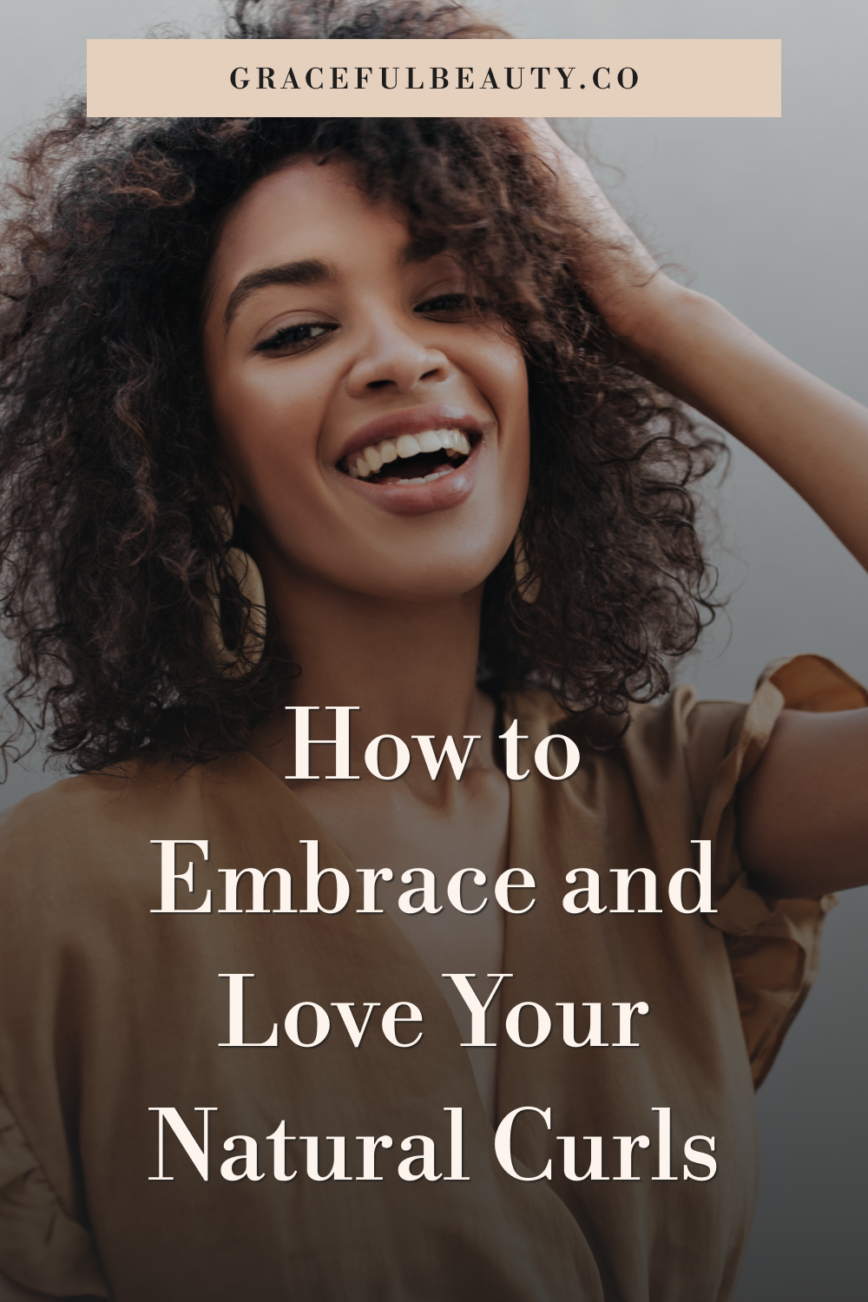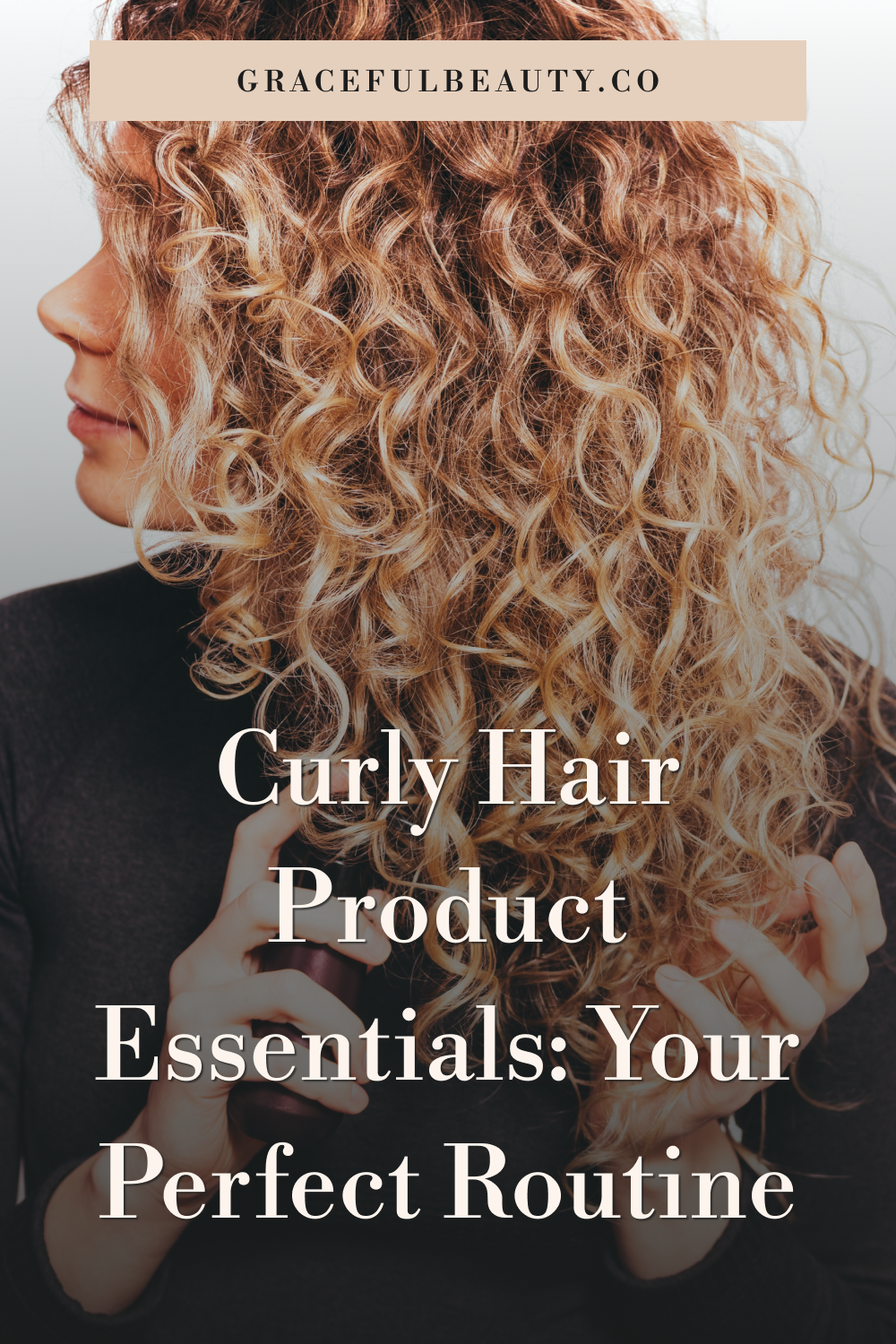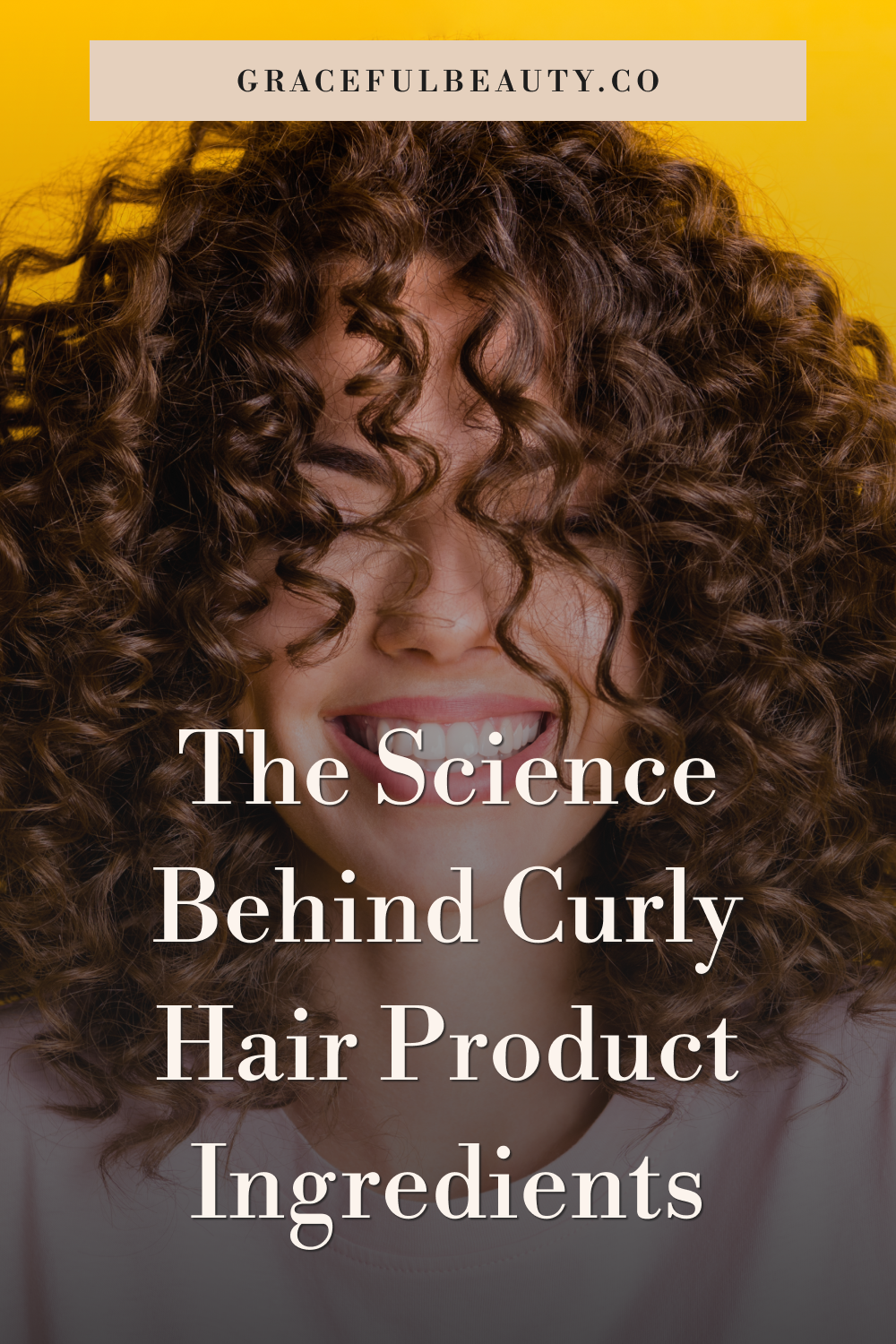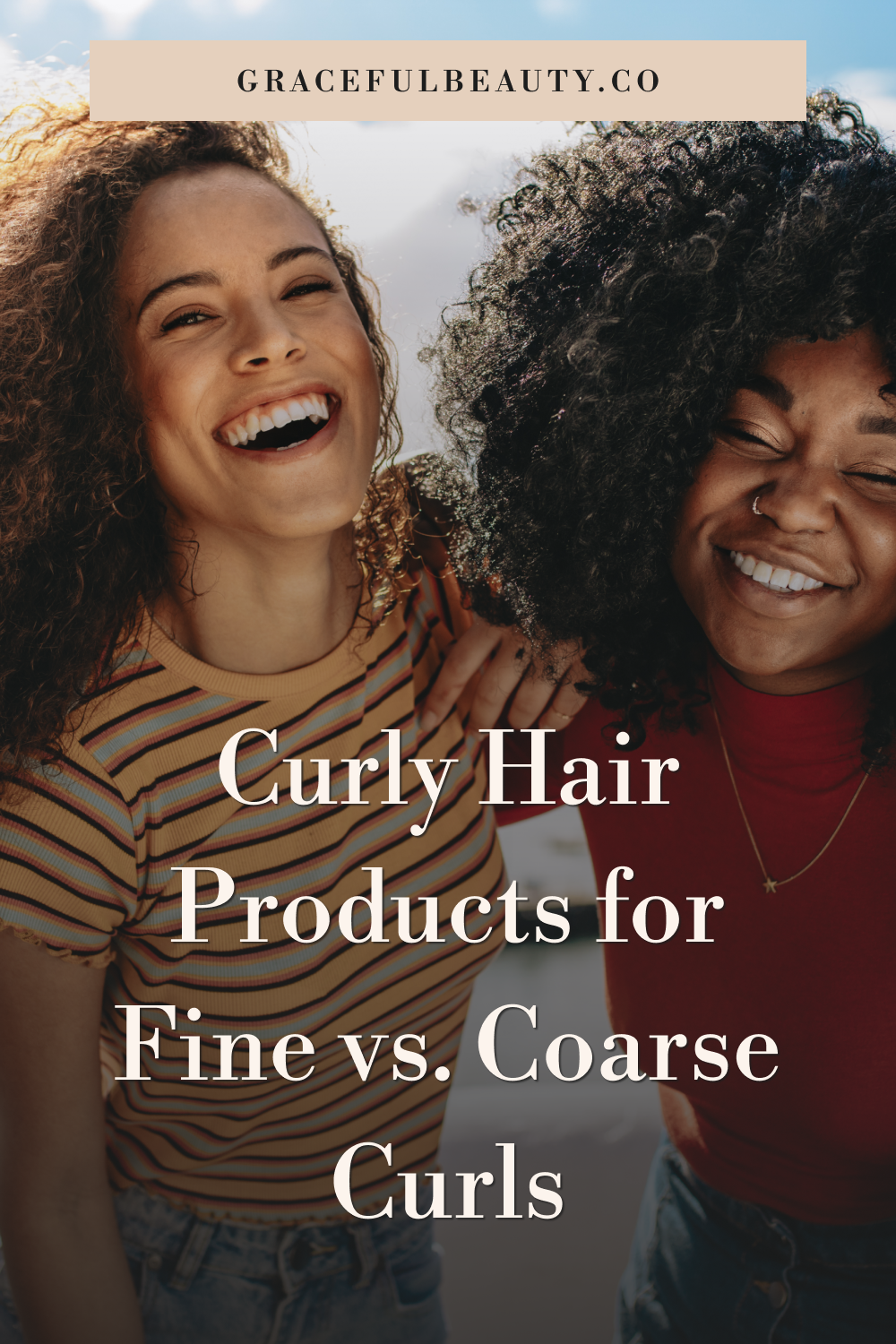
In this article, you will learn how to embrace and love your natural curls.
Are you struggling to embrace and love your natural curls? Many people find it challenging to appreciate and care for their curly hair, but with the right knowledge and techniques, you can learn to love and embrace your natural curls. In this blog post, we will explore practical tips and advice to help you confidently rock your curls and celebrate their unique beauty. Whether you have loose waves or tight coils, this guide will empower you to embrace and love your natural hair texture.
Understanding Your Curl Type
Understanding your unique curl pattern and porosity is crucial for proper hair care. Identifying your curl pattern allows you to choose appropriate products and styling techniques, while understanding your porosity helps in maintaining optimal curl health and moisture retention.
Identifying Your Curl Pattern
Curl patterns are typically categorized into types ranging from 2A to 4C. Type 2 features wavy hair, while type 3 comprises curly hair, and type 4 consists of coily or kinky hair. Determining your curl pattern involves observing the shape and size of your curls when your hair is in its natural state. This information empowers you to tailor your hair care routine to suit your specific needs, promoting healthier and more defined curls.
The Importance of Porosity in Curl Health
Porosity refers to your hair’s ability to absorb and retain moisture. Low porosity hair has a tightly bound cuticle layer, making it resistant to moisture, while high porosity hair has gaps and holes, allowing moisture to pass through easily but also escape rapidly. Understanding your hair’s porosity is essential in selecting the right products and techniques to maintain moisture balance and prevent issues like dryness or frizz. It also aids in the absorption of beneficial nutrients, ensuring overall hair health.
Developing a Curl-Friendly Hair Care Routine
Starting and maintaining a curl-friendly hair care routine is an essential aspect of embracing and loving your natural curls. By understanding the specific needs of curly hair, you can ensure that your locks remain healthy, defined, and full of life.
The Right Way to Cleanse Your Curls
Cleansing curly hair requires a delicate balance. Opt for sulfate-free shampoos to prevent stripping natural oils from your curls, as this can lead to dryness and frizz. Gently massage the scalp with your fingertips to lift dirt and buildup, then allow the suds to naturally cleanse the length of your curls when rinsing.
Conditioning
Conditioning is crucial for maintaining moisture and promoting curl definition. Apply a generous amount of conditioner from mid-length to the ends of your hair, focusing on areas that are prone to dryness. Consider using a wide-tooth comb to ensure even distribution and leave the conditioner in for a few minutes before rinsing thoroughly.
Detangling Without Damaging Your Curls
When detangling curly hair, patience and a gentle approach are key. Start by applying a detangling product or a leave-in conditioner to help soften knots and tangles. Use a wide-tooth comb or your fingers to carefully separate the curls, starting from the ends and working your way up to the roots to minimize breakage and preserve curl pattern integrity.
By following these steps for cleansing, conditioning, and detangling, you can establish a curl-friendly hair care routine that nurtures and accentuates the beauty of your natural curls.
The Perfect Cut for Your Curls
When it comes to embracing and loving your natural curls, getting the right haircut is crucial. This involves finding a curl-friendly hairstylist, choosing a suitable haircut that complements your specific curl type, and understanding how often to trim for maintaining healthy curls.
Choosing a Curl-Friendly Hairstylist
It’s essential to seek out a hairstylist who specializes in cutting and styling curly hair. Look for stylists with experience and training in working with natural curls. Many salons now have stylists who are specifically trained in cutting curly hair, and seeking out these experts can make a significant difference in the outcome of your haircut.
When selecting a hairstylist, consider asking for recommendations from friends or family members with curly hair or conducting thorough research to find a stylist with positive reviews and a portfolio showcasing their expertise in cutting and styling natural curls.
Popular Haircuts for Different Types of Curls
The right haircut can enhance your natural curls and make them easier to manage. Different curl types benefit from specific styles. For instance, those with loose waves may opt for long layers to add movement and reduce bulk, while individuals with tighter curls might consider a layered haircut to shape and define their curls. It’s crucial to discuss your curl pattern and hair texture with your hairstylist to determine the most suitable haircut for your unique curls.
How Often to Trim for Healthy Curls
Regular trims are essential for maintaining healthy curls. Trimming every 8-12 weeks can help prevent split ends and breakage, promoting the overall health and appearance of your curls. However, the frequency of trims may vary based on individual hair growth and the specific style of the cut. Your hairstylist can provide personalized recommendations on the ideal trimming schedule to keep your curls looking their best.
By choosing a curl-friendly hairstylist, selecting a haircut that compliments your curl type, and maintaining regular trims, you can achieve and embrace the natural beauty of your curls while keeping them healthy and vibrant.
The Best Products for Natural Curls
Embracing and loving your natural curls starts with finding the right products that work with your hair’s unique texture. When it comes to managing and enhancing curls, using the right shampoo and conditioner is essential. Here are some recommendations for curl-defining shampoos and conditioners, leave-in conditioners, curl creams, gels, and mousse.
Curl-Defining Shampoos and Conditioners
Curl-defining shampoos and conditioners are specifically designed to enhance the natural shape and pattern of curls while minimizing frizz. Look for sulfate-free formulas that provide moisture and definition without weighing down your curls. Ingredients like shea butter, coconut oil, and argan oil can help nourish your curls and maintain their natural bounce.
Leave-In Conditioners and Curl Creams
Leave-in conditioners and curl creams are crucial for maintaining moisture and defining curls throughout the day. These products help to detangle and soften curls, making them more manageable and less prone to breakage. Look for products that contain hydrating ingredients like aloe vera, jojoba oil, and glycerin to keep your curls looking healthy and vibrant.
Gels and Mousse
Gels and mousse are ideal for adding structure and hold to your curls without sacrificing their natural texture. They can help define and set your curls in place, reducing frizz and enhancing shine. Opt for alcohol-free formulas to avoid drying out your hair, and look for products that provide a flexible hold for natural movement.
By incorporating these products into your hair care routine, you can nourish, define, and enhance your natural curls, allowing them to shine with confidence and vitality.
Next, we will explore styling techniques and tips for managing curly hair on a daily basis.
Styling Your Curls Without Heat
Maintaining your natural curls without heat styling can help enhance their health and vibrancy. There are various techniques you can utilize to style your curls without applying heat, ensuring that they remain strong and luscious.
Finger Coiling for Definition
Finger coiling is a method that involves twisting small sections of hair around your fingers to encourage curl definition and minimize frizz. To achieve this, simply apply a curl-defining cream to damp hair, take small sections, and twirl them around your fingers until they naturally coil. This technique helps accentuate your natural curl pattern and boosts definition.
The Pineapple Method for Overnight Protection
The pineapple method is a popular technique for protecting curls while sleeping. To do this, gather your curls into a loose, high ponytail on top of your head, resembling the shape of a pineapple. This helps prevent flattening and tangling while you sleep, preserving your curls and reducing frizz the next day.
Diffusing Curls for Volume and Form
When looking to add volume and enhance the shape of your curls without heat damage, a diffuser attachment for your hair dryer can be extremely beneficial. After applying your favorite curl-enhancing product, use the diffuser on low heat and airflow settings. Gently cup your curls with the diffuser, bringing it close to your scalp to lift the roots and maintain the curl pattern while drying.
By incorporating these heat-free styling methods, you can embrace and love your natural curls while keeping them healthy and beautiful.
Caring for Your Curls
The Importance of Proper Hair Care Routine
Maintaining a proper hair care routine is essential for embracing and loving your natural curls. This involves using gentle, sulfate-free shampoos and nourishing conditioners specifically formulated for curly hair. Implementing a consistent routine ensures that your curls remain healthy, vibrant, and well-defined.
It’s important to understand the unique needs of curly hair and tailor your routine accordingly. Regular trims to prevent split ends, deep conditioning treatments, and minimal heat styling are key components of a comprehensive care regimen. By investing in a consistent and nurturing routine, you can showcase the natural beauty of your curls.
Moisturizing
Curly hair tends to be drier than straight hair due to the structure of the hair strands. Therefore, ample moisture is crucial for maintaining the health and appearance of your curls. Look for products containing ingredients such as shea butter, argan oil, and coconut oil to provide deep hydration and combat frizz.
Incorporating a leave-in conditioner or hair oil into your daily routine can help lock in moisture and promote soft, supple curls. Additionally, utilizing a hydrating hair mask on a weekly basis can replenish moisture and enhance the overall manageability of your curls.
Detangling Without Damaging Your Curls
Proper detangling techniques are vital for preventing damage and breakage while maintaining the integrity of your curls. Start by applying a generous amount of conditioner to your wet hair to provide slip and ease the detangling process. Utilize a wide-tooth comb or your fingers to gently detangle, starting from the ends and working your way up to the roots.
Avoid brushing your curls when dry, as this can lead to unnecessary tension and disruption of the curl pattern. Opt for detangling tools and methods that respect the natural texture of your curls, promoting longevity and strength.
Protecting Your Curls From Damage
Avoiding Heat Styling and Chemical Treatments
When it comes to embracing and loving your natural curls, it’s crucial to minimize the use of heat styling tools and chemical treatments. Curl patterns can be easily altered or damaged by excessive heat from styling tools like flat irons, curling wands, and blow dryers. Chemical treatments such as relaxers, perms, and color treatments can also compromise the natural integrity of your curls. Opt for heatless styling methods and natural hair care products to maintain the health and vibrancy of your curls. For further insight into the possible effects of chemical treatments on curly hair, check out this article on curly hair care tips from Science Direct.
Protecting Your Hair While Sleeping
Protecting your curls while sleeping is essential to prevent damage and preserve your natural curl pattern. Sleeping on a satin or silk pillowcase can reduce friction and prevent hair breakage. Additionally, using a silk or satin scarf, bonnet, or hair wrap can help maintain moisture and prevent excessive tangling during the night. This simple adjustment in your bedtime routine can contribute to the overall health and longevity of your curls.
Tips for Curly Hair Care in Different Weather Conditions
Adapting your curly hair care routine to different weather conditions is essential for maintaining your natural curl pattern. In humid weather, it’s beneficial to use anti-humidity hair products to control frizz and maintain curl definition.
On the other hand, in dry or cold weather, incorporating deep conditioning treatments and moisturizing hair products can help combat dryness and maintain elasticity in your curls. Understanding the impact of weather on your curls and adjusting your hair care routine accordingly is fundamental to nurturing healthy and resilient curls.
Embracing the Uniqueness of Your Curls
I understand the challenges of embracing your natural curls. The journey to self-acceptance and confidence with curly hair is not just physical but also psychological. It’s essential to recognize the psychological benefits of embracing your natural hair, find support in the natural hair community, and celebrate your curls with confidence.
The Psychological Benefits of Accepting Your Natural Hair
Accepting and embracing your natural hair can be empowering. It’s a journey that often leads to increased self-confidence, pride in your heritage, and a stronger sense of identity. When you choose to wear your hair the way it naturally grows, you’re embracing your authenticity and uniqueness, which can have a positive impact on your overall well-being.
Joining the Natural Hair Community
Joining the natural hair community can provide valuable support and guidance. It’s a space where individuals share their experiences, struggles, and triumphs while embracing their natural curls. Connecting with others who are on a similar journey can offer encouragement, tips for hair care, and a sense of belonging.
Celebrating Your Curls with Confidence
Embracing your curls with confidence is a powerful statement of self-acceptance. It involves celebrating the natural beauty and versatility of curly hair. By confidently wearing your curls in various styles and settings, you challenge traditional beauty standards and inspire others to embrace their unique hair textures. Confidence in your curls radiates positivity and authenticity.
Diet and Lifestyle Changes for Healthier Curls
Maintaining beautiful, healthy curls extends beyond hair products to include diet and lifestyle choices. By making conscious decisions about what you consume and how you care for your body, you can significantly enhance the vitality of your natural curls.
Nutrients That Enhance Curl Vitality
Consuming a balanced diet rich in essential nutrients can promote the health and appearance of your curls. Key nutrients for promoting strong, lustrous curls include protein, biotin, vitamins A and E, and omega-3 fatty acids. Protein is particularly vital for hair strength and elasticity, while biotin supports overall hair health. Foods like eggs, nuts, spinach, and avocados are excellent sources of these nutrients and can play a crucial role in nourishing your curls from the inside out.
The Role of Water Intake in Hair Health
Hydration is fundamental to healthy, vibrant curls. Adequate water intake not only benefits your overall well-being but also directly impacts the moisture levels of your hair. When your body is hydrated, your hair is better equipped to maintain its natural moisture balance, leading to reduced frizz and increased curl definition. Aim to consume at least eight glasses of water daily, and consider incorporating hydrating foods such as cucumbers, watermelon, and oranges into your diet.
Exercise and Stress Reduction for Stronger Hair
Regular exercise and stress management are often overlooked aspects of maintaining healthy curls. Engaging in physical activity stimulates blood flow to the scalp, promoting the delivery of essential nutrients to the hair follicles. Additionally, stress can contribute to hair loss and reduced curl vitality, making it crucial to prioritize activities that promote relaxation and mental well-being. Incorporating techniques such as yoga, meditation, or simply engaging in activities you enjoy can significantly impact the strength and resilience of your curls.
Common Mistakes to Avoid with Curly Hair
When it comes to caring for your natural curls, some common mistakes can have detrimental effects on your hair. Over-manipulation, towel drying, and misconceptions about curly hair care are areas where many individuals go wrong.
Over-Manipulation and Its Effects
Over-manipulation of curly hair can lead to breakage and damage. Constant touching, brushing, or styling can cause the natural curl pattern to become disrupted, resulting in frizz and lack of definition. Embracing your natural curls means allowing them to be, without excessive manipulation that can cause harm.
The Perils of Towel Drying
Towel drying curly hair with a regular terrycloth towel can lead to frizz and tangles. The nubs in these towels disrupt the hair cuticles and absorb too much water, resulting in a disheveled appearance. Opt for a gentle cotton T-shirt or microfiber towel to scrunch dry, preserving the natural curl pattern without causing frizz or matting.
Misconceptions About Curly Hair Care
There are common misconceptions about curly hair care, such as the belief that it needs to be washed frequently or that certain styling methods are suitable for all curl types. Understanding the specific needs of your curls and debunking myths about curly hair care is crucial for maintaining healthy, vibrant curls.
DIY Treatments and Masks for Curly Hair
Curly hair requires extra care and attention to keep it healthy and vibrant. Fortunately, there are various DIY treatments and masks that you can easily prepare at home to nourish and rejuvenate your curls.
Homemade Deep Conditioning Treatments
1. Avocado and Coconut Oil Mask: Combine mashed avocado with coconut oil to create a rich, hydrating hair mask. Apply the mixture to damp hair, leave it on for 20-30 minutes, then rinse thoroughly. Avocado is packed with vitamins and essential fatty acids, while coconut oil penetrates the hair shaft to moisturize and strengthen curls.
2. Honey and Aloe Vera Gel Treatment: Mix equal parts honey and aloe vera gel to form a conditioning treatment. Apply this blend to your hair, focusing on the ends, and leave it on for 15-20 minutes before rinsing. Honey acts as a humectant, drawing moisture into the hair, while aloe vera soothes the scalp and promotes hair health.
Natural Oils for Scalp and Hair Nourishment
Including natural oils in your hair care routine can provide deep nourishment and improve the overall health of your curls.
1. Argan Oil: Known for its nourishing properties, argan oil is excellent for taming frizz and adding shine to curly hair. Apply a few drops to the mid-lengths and ends of your hair to reap its benefits.
2. Jojoba Oil: Jojoba oil closely resembles the natural sebum produced by the scalp, making it an ideal choice for moisturizing the scalp and hair without leaving a greasy residue.
Protein Treatments to Rejuvenate Curls
1. Egg and Yogurt Mask: Whisk together an egg and plain yogurt to create a protein-rich mask. Apply it to your hair and let it sit for 20-30 minutes before rinsing. Eggs and yogurt are rich in protein, essential for strengthening and repairing damaged hair.
2. Banana and Olive Oil Treatment: Mash a ripe banana and mix it with olive oil to form a thick paste. Apply the mixture to your hair, leave it on for 15-20 minutes, then rinse thoroughly. Bananas contain amino acids that help maintain the strength and elasticity of curls, while olive oil adds moisture and shine.
By incorporating these DIY treatments into your curly hair care routine, you can nourish and pamper your natural curls, helping them look their best.
Transitioning to Natural Curls
Transitioning to natural curls is a significant journey that requires careful consideration before making the change. The process involves embracing your hair’s natural texture, which can be both exciting and challenging. Here are some essential aspects to consider when making the switch.
The Big Chop vs. Gradual Transitioning
The Big Chop: For those seeking a more immediate transition, the “big chop” involves cutting off all chemically straightened or damaged hair to allow new, natural curls to grow. While this can be a bold and liberating choice, it may also be a drastic change that requires confidence and commitment.
Gradual Transitioning: Alternatively, gradual transitioning allows individuals to grow out their natural texture while gradually trimming away the chemically treated ends. This approach provides a smoother adjustment period, allowing individuals to become accustomed to their evolving curls at their own pace.
Handling Different Textures During Transition
During the transition phase, it’s common to experience a mix of textures as new growth emerges while remnants of chemically treated hair remain. This can create challenges in managing and styling your hair. To address this, consider using moisturizing and nourishing hair products designed for transitioning hair to help maintain the health and appearance of your curls.
Keeping Your Scalp Healthy During Transition
As your hair undergoes the transition, it’s crucial to prioritize scalp health. Regularly moisturizing your scalp and maintaining a balanced diet can aid in promoting healthy hair growth and preventing scalp dryness or irritation. Additionally, incorporating scalp massages and gentle exfoliation can stimulate blood flow and promote overall scalp health, supporting the transition to natural curls.
Final Thoughts
Embracing and loving your natural curls is about more than just hair care; it’s a mindset. By understanding and accepting your unique curl pattern and texture, you can confidently wear your curls with pride. With proper care and the right products, you can enhance the natural beauty of your curls and feel confident in your own skin. Remember, your curls are a beautiful part of what makes you, you. Celebrate and embrace them every day.












